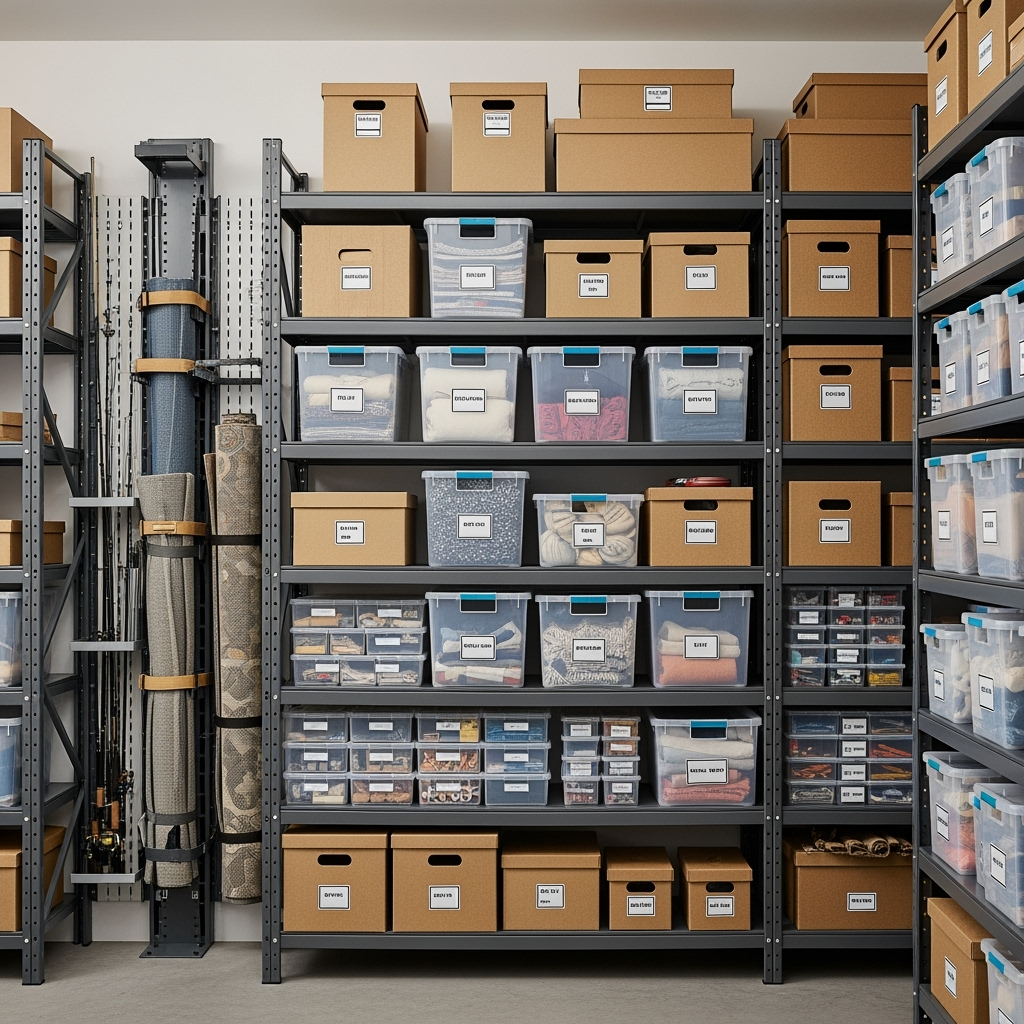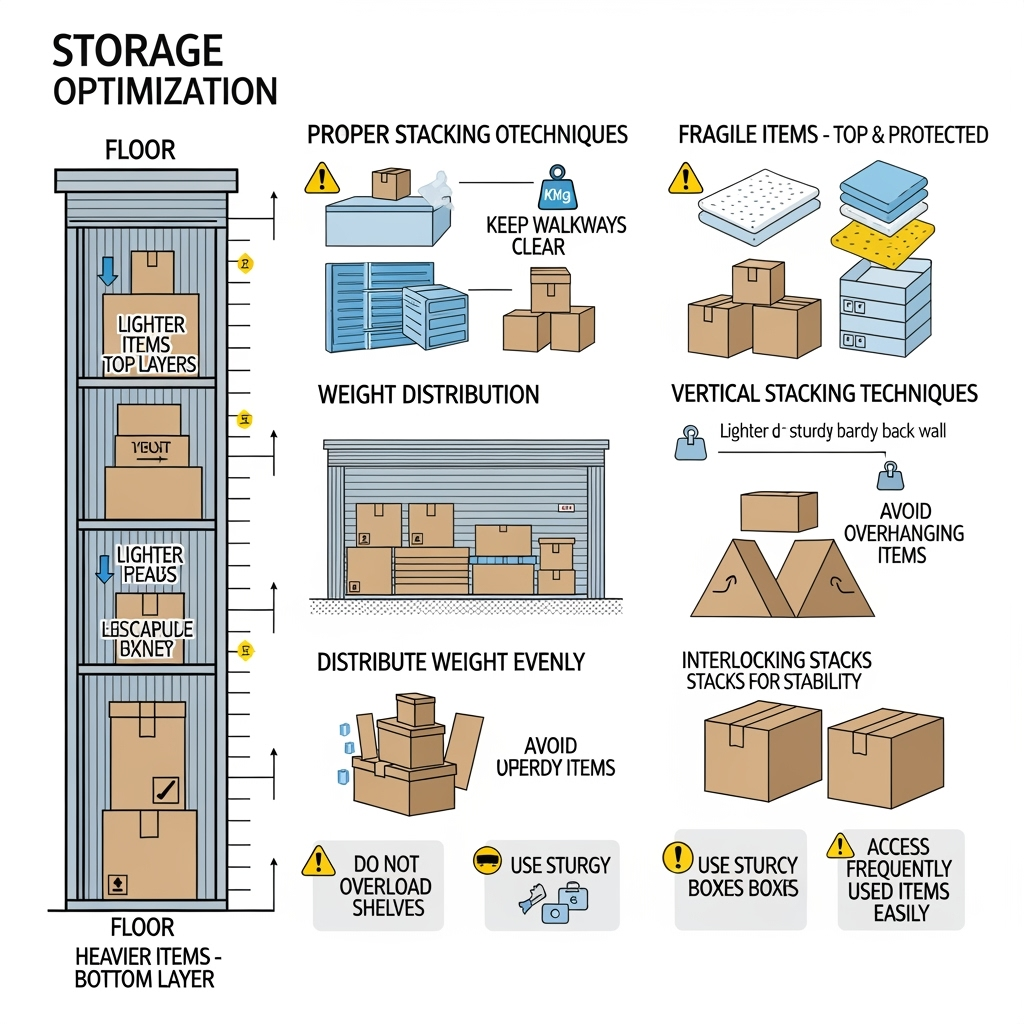The Often-Overlooked Dimension in Storage Units: Going Up
When it comes to maximizing storage unit space, many people focus on square footage but overlook a crucial dimension: height. By effectively utilizing vertical space, you can potentially double or even triple your storage capacity without increasing your monthly costs. This comprehensive guide will show you how to safely and efficiently maximize your storage unit’s vertical potential.

Essential Equipment for Vertical Storage Success
Before you start stacking, ensure you have the right tools and equipment:
- Industrial-grade shelving units with weight ratings
- Sturdy plastic bins with secure lids
- Modular drawer systems
- Wall-mounted storage solutions
- Step ladder or platform ladder
- Heavy-duty zip ties and bungee cords
Safe Stacking Techniques and Weight Distribution
Proper weight distribution is crucial for safety and accessibility. Follow these guidelines:

- Place heaviest items on the bottom shelves
- Create a stable base using uniform boxes
- Leave access paths between vertical storage sections
- Keep frequently accessed items at eye level
- Use corner braces for additional stability
Maximizing Space with Smart Organization
Implement these strategies to optimize your vertical storage:
1. Zone Planning
Divide your unit into vertical zones based on:
- Frequency of access
- Item weight and size
- Season of use
- Storage duration
2. Modular Systems
Choose storage solutions that can grow with your needs:
- Adjustable shelving units
- Stackable containers
- Expandable rack systems
- Customizable wall organizers
Safety Considerations for Vertical Storage
Prioritize safety with these essential practices:
- Never exceed shelf or stack weight limits
- Ensure proper ventilation between stacks
- Use safety straps for tall shelving units
- Maintain clear access to electrical outlets and lighting
- Keep a sturdy step ladder in your unit
Special Considerations for Different Item Types
Furniture
Store furniture pieces vertically when possible:
- Stand mattresses upright with protective covers
- Use furniture covers for dust protection
- Disassemble large pieces when practical
- Store table legs vertically in dedicated tubes
Business Inventory
Optimize vertical space for commercial storage:
- Use industrial pallet racking systems
- Implement inventory tracking by vertical zones
- Create efficient picking paths
- Rotate stock using FIFO (First In, First Out) method
Maintenance and Regular Checks
Keep your vertical storage system functioning safely:
- Inspect shelving units monthly for stability
- Check weight distribution quarterly
- Clean and adjust storage zones as needed
- Document your organization system
- Update zone labels regularly
Common Mistakes to Avoid
Steer clear of these vertical storage pitfalls:
- Overloading upper shelves
- Blocking air circulation
- Creating unstable stacks
- Ignoring weight limits
- Making access difficult
Cost-Effective Vertical Storage Solutions
Maximize your storage budget with these tips:
- Invest in quality shelving units
- Use uniform, stackable containers
- Consider modular systems that can expand
- Share larger equipment costs with storage neighbors
- Look for seasonal sales on storage solutions
Conclusion: Making the Most of Your Vertical Space
Effective vertical storage organization can transform your storage unit’s capacity and accessibility. By implementing these strategies and maintaining proper safety protocols, you’ll create an efficient, organized space that maximizes every cubic foot of your unit. Remember to regularly assess and adjust your system as your storage needs evolve.










Leave a Reply